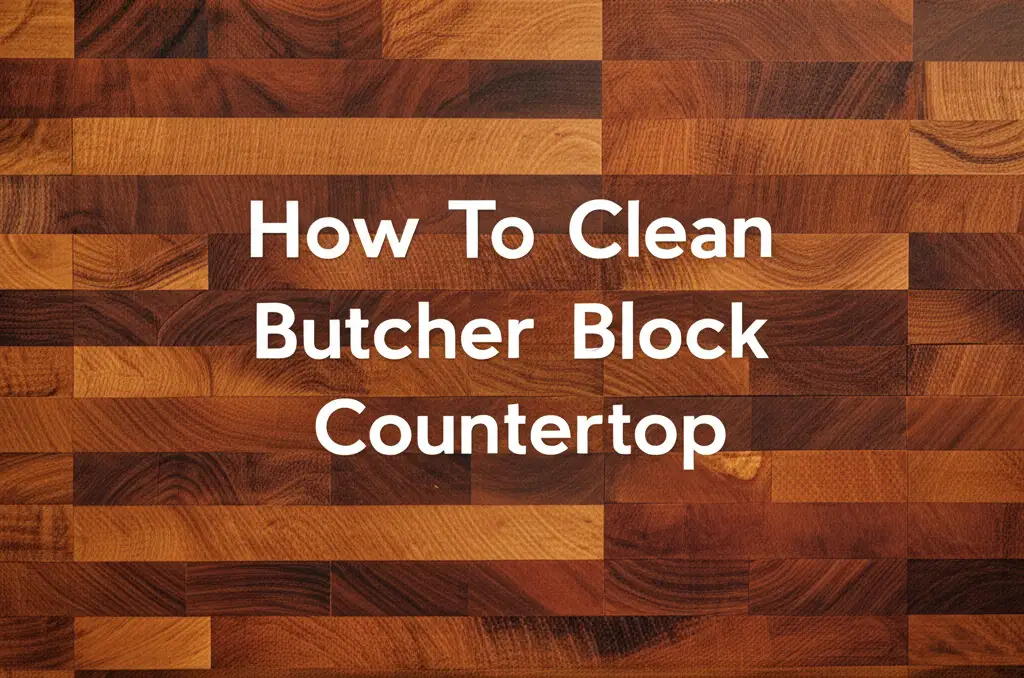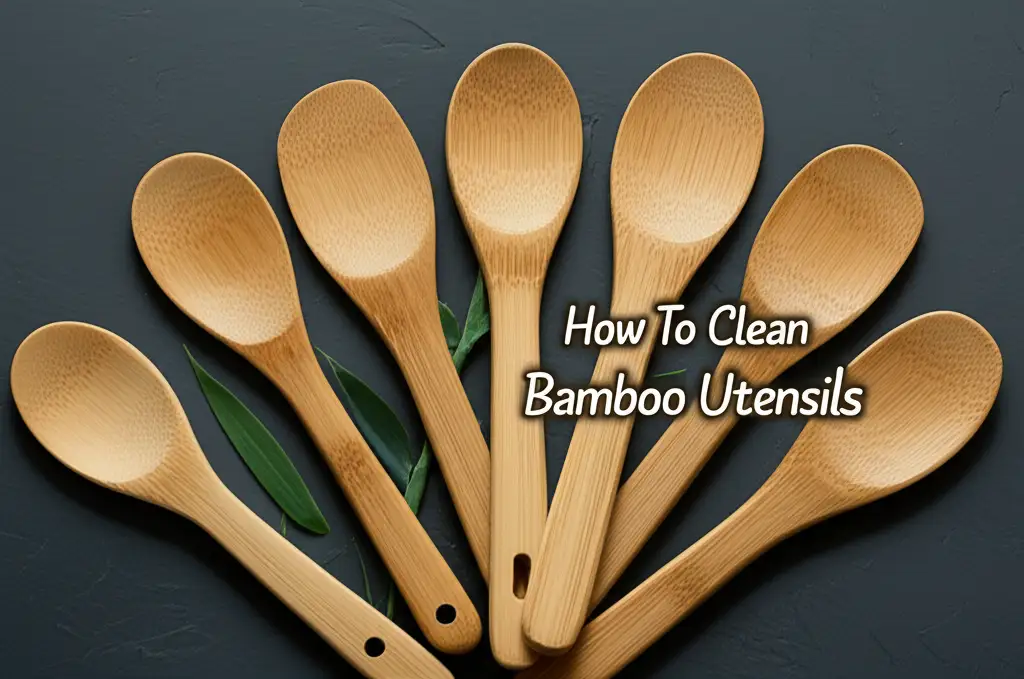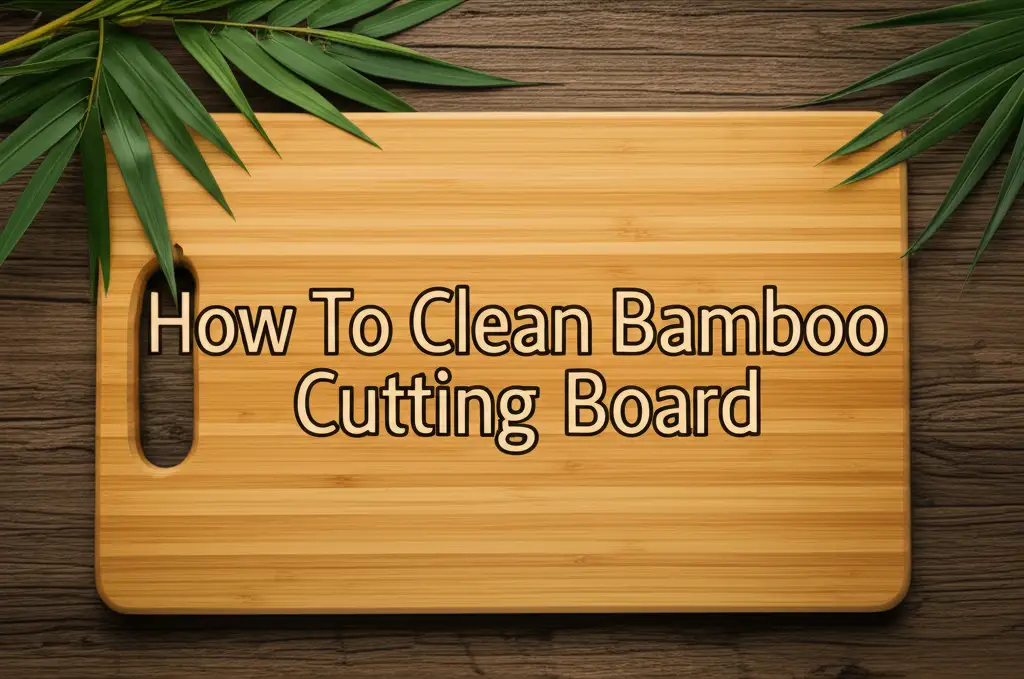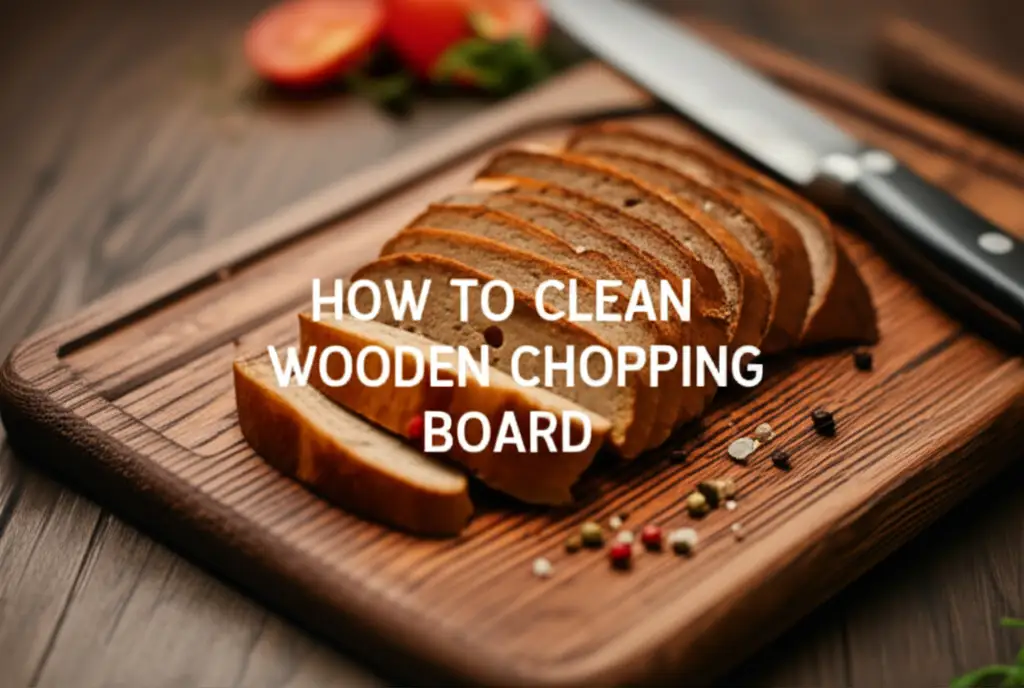· Kitchen Care · 16 min read
How To Clean Butcher Block Countertop

Cleaning Your Butcher Block Countertop: A Comprehensive Guide
My kitchen has a beautiful butcher block countertop. I know it adds warmth and character. However, wood surfaces need specific care. Keeping your butcher block clean ensures its beauty and extends its life. It also keeps your kitchen hygienic for food preparation. Improper cleaning can lead to damage, stains, or even mold growth.
This article will show you exactly how to clean butcher block countertop surfaces. We will cover daily cleaning routines and deep cleaning methods. You will learn how to tackle tough stains and spills. We also discuss sanitization practices to keep your kitchen safe. Finally, we explain proper maintenance for long-term care.
Takeaway
To maintain your butcher block countertop:
- Wipe spills immediately.
- Use mild soap and warm water for daily cleaning.
- Deep clean regularly with natural solutions.
- Address stains quickly with targeted methods.
- Sanitize the surface for food safety.
- Oil the wood periodically to protect it.
Butcher block countertops need proper cleaning and care to remain beautiful and functional. You should wipe spills immediately. For daily cleaning, use a damp cloth with a mild dish soap solution. For deeper cleaning or sanitization, a mix of white vinegar or a lemon and salt scrub works well. Always dry the surface completely after cleaning. Regular oiling with food-grade mineral oil is essential for protection.
Essential Daily Care for Butcher Block Countertops
Maintaining a butcher block countertop begins with daily habits. Regular cleaning prevents dirt buildup and keeps your surface looking good. This simple routine also makes deeper cleaning less frequent. I find that a quick wipe-down after each use makes a big difference. It helps to keep the wood in excellent condition.
Start by wiping away crumbs and food debris. Use a soft cloth or sponge for this. Then, prepare a gentle cleaning solution. Mix a few drops of mild dish soap with warm water. Dampen your cloth with this solution. Wring it out well. The cloth should be damp, not dripping wet. Excess water is bad for wood.
Wipe the entire surface of your butcher block countertop. Move with the wood grain for best results. This ensures even cleaning. After wiping, use a separate, clean, dry cloth. Wipe the countertop again to remove any soap residue. It also helps to absorb excess moisture. Always ensure the surface is completely dry. Leaving water can cause wood damage or warping over time. A quick dry is key for preventing water marks.
- Remove Debris: Use a dry cloth or scraper to clear away food bits.
- Prepare Solution: Mix warm water with a small amount of mild dish soap.
- Wipe Down: Dampen a cloth, wring it well, and wipe the countertop following the grain.
- Rinse & Dry: Use a fresh, clean, and dry cloth to wipe away soap and absorb all moisture.
- Immediate Spills: Address spills immediately. Wood can absorb liquids quickly, leading to stains. This step prevents many common issues.
Deep Cleaning Your Butcher Block Countertop
Deep cleaning your butcher block countertop removes stubborn dirt and grime. It also helps to refresh the wood. I typically deep clean my countertop every few weeks. This frequency depends on how much you use it. For heavy use, consider weekly deep cleaning. Natural solutions are often effective and safe for wood. They avoid harsh chemicals that can strip the wood’s finish.
One excellent method uses white vinegar. Vinegar is a natural disinfectant and cleaner. Mix equal parts white vinegar and water in a spray bottle. Spray the solution lightly over the butcher block surface. Let it sit for about 5-10 minutes. This allows the vinegar to work on grime and bacteria. Then, wipe the surface clean with a damp cloth. Finish by drying thoroughly with a clean, dry cloth. Vinegar helps to neutralize odors as well.
Another powerful natural cleaner involves baking soda and lemon. Baking soda acts as a gentle abrasive. Lemon provides natural acidity and a fresh scent. Sprinkle baking soda generously over the countertop. Then, cut a lemon in half. Use the lemon half to scrub the baking soda into the wood. Squeeze the lemon as you scrub. This creates a paste. Focus on areas with built-up grime. Let the paste sit for 10-15 minutes. Scrape off the paste with a plastic scraper. Then, wipe with a damp cloth and dry completely. This method is fantastic for brightening the wood. You can learn more about general cleaning with these ingredients here: how to clean with vinegar and baking soda.
- Vinegar Solution: Mix equal parts white vinegar and water. Spray, let sit for 5-10 minutes, then wipe and dry.
- Baking Soda & Lemon Scrub: Sprinkle baking soda, scrub with a lemon half, let sit for 10-15 minutes, then scrape, wipe, and dry.
- Rinse and Dry: Always rinse the surface with a damp, clean cloth. Immediately dry with a separate, clean cloth. This prevents moisture damage.
Effective Stain Removal Techniques for Wood Countertops
Stains on butcher block countertops can be frustrating. However, most stains are removable with the right approach. Prompt action is key when you notice a new stain. The longer a stain sits, the deeper it penetrates the wood. I have found success with several techniques depending on the stain type. Remember to always test a small, inconspicuous area first. This checks for any adverse reactions on your specific wood type. Knowing how to clean stains on wood is a valuable skill.
For common food stains like coffee, wine, or juice, a lemon and salt paste often works wonders. Sprinkle a generous amount of coarse salt directly on the stain. Cut a lemon in half and use it to scrub the salt into the stained area. Apply gentle pressure. The salt acts as an abrasive, and the lemon’s acidity helps lift the stain. Let the mixture sit for 15-30 minutes. Then, scrape off the paste with a plastic spatula. Wipe the area with a damp cloth and dry it thoroughly. You can repeat this process if the stain persists.
Darker, more stubborn stains, or even minor scorch marks, might need a light sanding. Use fine-grit sandpaper (around 120-220 grit). Sand lightly in the direction of the wood grain. Do not press too hard. The goal is to remove only the stained layer. After sanding, wipe away all dust. Then, apply a small amount of food-grade mineral oil to the sanded area. Blend it into the surrounding wood. This re-seals and protects the wood. For ink or marker stains, a small amount of rubbing alcohol on a cotton ball can sometimes help. Dab, do not rub, and follow with a damp cloth and re-oiling.
- Lemon and Salt: Apply salt to the stain, scrub with a lemon half, let sit, then scrape and clean.
- Light Sanding: For deep stains, gently sand with fine-grit sandpaper following the grain. Re-oil the sanded area.
- Rubbing Alcohol (for specific stains): Dab a cotton ball with alcohol on ink/marker, then clean and re-oil.
- Immediate Action: Address spills quickly to prevent them from becoming deep, permanent stains.
Sanitizing Butcher Block for Food Safety
Sanitizing your butcher block countertop is very important, especially when you prepare raw meats or poultry. Wood is naturally porous. It can harbor bacteria if not cleaned properly. Regular sanitization reduces the risk of foodborne illness. I always make sure to sanitize my butcher block after cutting any raw protein. This practice provides peace of mind.
White vinegar is an excellent, natural sanitizing agent for butcher blocks. Its acidity helps to kill bacteria and mold. Mix a solution of undiluted white vinegar. You can put it in a spray bottle or apply it directly with a clean cloth. Spray or wipe the entire butcher block surface. Allow the vinegar to sit on the surface for at least 5-10 minutes. This contact time is crucial for disinfection. After the waiting period, wipe the surface clean with a damp cloth. Then, immediately dry the countertop completely with a clean, dry towel. Air dry for a while after that to ensure all moisture is gone. If you have issues with mold in other areas of your home, understanding how to clean mold with vinegar can be helpful.
Hydrogen peroxide is another effective sanitizing option. It breaks down into water and oxygen, leaving no harmful residues. Use a 3% hydrogen peroxide solution. Spray it directly onto the butcher block. Let it sit for a few minutes. Then, wipe it away with a clean, damp cloth. Dry the surface thoroughly. Never mix hydrogen peroxide with vinegar. This creates a harmful gas. Always use them separately. For very tough stains or odors, you can even sprinkle a thin layer of salt over the entire surface after cleaning, let it sit overnight, and then scrape it off in the morning before re-oiling. This absorbs odors and further sanitizes.
- White Vinegar: Apply undiluted white vinegar, let sit for 5-10 minutes, wipe clean, and dry completely.
- Hydrogen Peroxide (3%): Spray on, let sit for a few minutes, wipe, and dry. Do not mix with vinegar.
- Salt Treatment: For strong odors or deep sanitization, sprinkle salt overnight, then scrape and re-oil.
- Always Dry: Ensure the butcher block is completely dry after any sanitization step.
Preventing Mold and Mildew on Your Butcher Block
Mold and mildew can grow on butcher block countertops if they stay wet. This is a common issue for any wood surface in a kitchen. Preventing moisture buildup is your best defense. I always wipe down my butcher block immediately after cleaning or spills. This habit has saved me from many potential mold problems. Learning about how to clean mold in shower or how to clean mold off silicone shows similar principles of moisture control.
Ensure good air circulation around your countertop. Do not leave wet sponges, towels, or dishes on the butcher block for long periods. These items trap moisture. This trapped moisture creates a perfect environment for mold spores to thrive. If you have a sink cutout in your butcher block, pay extra attention to drying around the edges. Water can pool there easily. Consider applying a water-resistant sealant or extra coats of mineral oil near sink areas.
If you discover mold or mildew on your butcher block, act quickly. For light mold, a solution of white vinegar works well. As mentioned before, vinegar is an antifungal agent. Spray undiluted white vinegar directly onto the moldy area. Let it sit for at least an hour. Then, scrub the area with a stiff brush or sponge. Wipe clean with a damp cloth and dry thoroughly. For more stubborn mold, you might need a light sanding of the affected area. After sanding, clean the dust and re-oil the wood. Proper drying after every cleaning is the single most important step to prevent future mold growth.
- Immediate Drying: Wipe up all spills and cleaning solutions promptly.
- Avoid Standing Water: Do not leave wet items on the surface.
- Good Ventilation: Ensure air can circulate around the countertop.
- Vinegar Treatment: For existing mold, spray undiluted vinegar, let sit, scrub, then clean and dry.
- Sanding (for severe mold): Lightly sand the affected area, then clean and re-oil.
Oiling and Maintaining Your Butcher Block for Longevity
Cleaning is only one part of butcher block care. Oiling your butcher block is just as important. It protects the wood from moisture, prevents cracking, and keeps it looking rich. I oil my butcher block regularly. This simple step makes a huge difference in its long-term health and appearance. A well-oiled butcher block is also easier to clean.
You should use food-grade mineral oil for oiling. Do not use vegetable oils like olive oil or cooking oil. These can go rancid and make your butcher block smell bad. You can buy mineral oil at most hardware stores or online. Some people also use a blend of mineral oil and beeswax, called “butcher block cream.” This blend offers even better protection. You can also research tung oil or walnut oil, but ensure they are food-safe if you plan to use the surface for food prep. Mineral oil is the most common and safest choice for beginners.
To oil your butcher block:
- Clean and Dry: Ensure the butcher block is perfectly clean and completely dry before you start. Any moisture trapped under the oil can cause problems.
- Apply Oil: Pour a generous amount of mineral oil directly onto the wood surface.
- Spread Evenly: Use a clean, soft cloth or paper towel to spread the oil. Work it into the wood in the direction of the grain. Cover the entire surface, including the sides.
- Allow to Soak: Let the oil soak into the wood for at least 4-6 hours, or even overnight. The wood will absorb what it needs.
- Wipe Excess: After soaking, use a clean, dry cloth to wipe off any excess oil. The surface should feel smooth, not greasy.
- Frequency: For new butcher blocks, oil daily for the first week, then weekly for the first month. After that, oil monthly or whenever the wood looks dry or dull. A good test is the water bead test: if water no longer beads on the surface, it is time to re-oil.
Restoring and Repairing Your Butcher Block Countertop
Even with the best care, butcher block countertops can develop nicks, scratches, or dry spots. Knowing how to restore and repair them can bring them back to life. I once had a deep knife mark on my butcher block. I thought it was ruined, but a little repair work made it look almost new again. This process keeps your investment beautiful for years.
Minor scratches and nicks are common. You can often remove these with light sanding. Use fine-grit sandpaper (180-220 grit). Sand gently in the direction of the wood grain. Do not sand against the grain. This can leave noticeable marks. After sanding, wipe away all dust. Then, apply mineral oil generously to the sanded area. Let it soak, and wipe off the excess. The oil helps to re-hydrate the wood and blend the repaired area with the rest of the surface. For very shallow marks, sometimes just applying extra oil can make them less noticeable.
For deeper gouges or cuts, you might need a bit more effort. You can try to swell the wood fibers. Place a damp cloth over the dent. Then, gently iron the cloth with a warm (not hot) iron. The steam can cause the compressed wood fibers to expand. Be very careful not to scorch the wood. Repeat this process until the dent is less noticeable. After this, let the wood dry completely. Then, sand lightly if needed and re-oil the area. For very severe damage, professional help or replacement of a section might be necessary. But most common wear and tear is fixable at home.
- Minor Scratches: Lightly sand with fine-grit sandpaper (180-220) in the direction of the grain.
- Deep Gouges: Place a damp cloth over the gouge and gently iron it to swell the wood fibers.
- Clean After Repair: Always wipe away sanding dust or moisture.
- Re-oil: Generously apply mineral oil to the repaired area and the entire countertop after any repair work. This protects the newly exposed wood.
- Assess Damage: Determine if the damage is minor, needing simple sanding, or more significant, requiring swelling techniques.
Common Butcher Block Cleaning Mistakes to Avoid
Even with good intentions, people make mistakes when cleaning butcher block countertops. Avoiding these common errors prevents damage and extends the life of your wood surface. I learned some of these lessons the hard way. Knowing what not to do is just as important as knowing what to do.
One major mistake is using harsh chemical cleaners. Products like bleach, ammonia-based cleaners, or abrasive cleansers are bad for wood. They can strip the wood’s natural oils and finish. This leaves the wood dry, prone to cracking, and susceptible to stains. These chemicals also leave residues. These residues are unsafe for a food preparation surface. Stick to mild soap, vinegar, lemon, and mineral oil.
Another frequent error is leaving the butcher block wet. As I have emphasized, moisture is the enemy of wood. Standing water can cause swelling, warping, and mold growth. Always dry your countertop thoroughly after cleaning. Do not let spills sit. Use a clean, dry towel to absorb all moisture. Avoid using dishwashers for any removable butcher block sections. Hand washing and immediate drying are crucial. Also, do not place hot pots or pans directly on the surface without a trivet. The heat can cause scorching or cracks.
- Avoid Harsh Chemicals: Do not use bleach, ammonia, or abrasive cleaners.
- Never Leave Wet: Always dry the countertop completely after cleaning or spills.
- No Standing Water: Do not let water sit on the surface.
- No Hot Pans: Always use trivets for hot cookware to prevent burns or cracks.
- Over-Sanding: Avoid excessive or aggressive sanding, which can thin the wood unnecessarily. Only sand when needed and use appropriate grit.
FAQ Section
How often should I clean my butcher block countertop?
You should wipe down your butcher block daily after each use with a mild soap and water solution. Deep cleaning, using vinegar or baking soda, is recommended weekly or every few weeks depending on how often you use the surface for food prep. Always dry thoroughly after any cleaning.
Can I use bleach on my butcher block?
No, you should never use bleach on your butcher block countertop. Bleach is a harsh chemical. It can dry out the wood, damage its finish, and potentially cause discoloration. It also leaves residues that are unsafe for a food contact surface. Stick to natural and food-safe cleaners.
What is the best oil for butcher block?
Food-grade mineral oil is the best and most commonly recommended oil for butcher block countertops. It is safe for food contact and penetrates the wood well. You can also use a mixture of mineral oil and beeswax for added protection. Avoid vegetable oils as they can go rancid.
How do I remove black mold spots from butcher block?
For black mold spots, mix undiluted white vinegar in a spray bottle. Spray it directly on the mold. Let it sit for at least an hour. Scrub with a stiff brush, then wipe with a damp cloth. Dry completely. For stubborn spots, light sanding may be needed, followed by re-oiling.
Is it okay to cut directly on a butcher block?
Yes, butcher block countertops are designed for cutting. They are more forgiving on knife edges than stone or synthetic surfaces. However, heavy cutting can leave knife marks. Regular oiling and occasional light sanding can help maintain the appearance of the surface from cutting.
What if my butcher block feels sticky after oiling?
If your butcher block feels sticky after oiling, it means you applied too much oil or did not wipe off the excess properly. Use a clean, dry cloth to buff the surface vigorously. This will remove the excess oil. Continue buffing until the surface feels smooth and dry to the touch, not sticky.
Conclusion
Cleaning and maintaining your butcher block countertop does not have to be a chore. With the right techniques and consistent care, your wood surfaces will remain beautiful and hygienic for many years. We covered everything from daily wipe-downs to deep cleaning methods, stain removal, and crucial sanitization practices. Remember that proper oiling is just as vital as cleaning for longevity and protection.
By understanding how to clean butcher block countertop surfaces effectively, you protect your investment. You also ensure a safe and inviting space for food preparation. My own experience shows that these simple steps make a big difference. Embrace these habits and enjoy the natural beauty your butcher block brings to your kitchen. Keep your wood surfaces healthy and radiant. Start applying these tips today for a cleaner, safer kitchen.
- butcher block care
- wood countertop cleaning
- kitchen hygiene




